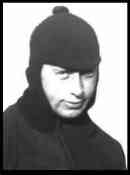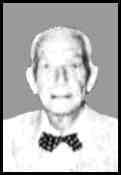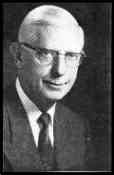 |
 |
 |
||
| Carl Batts, 1916. | Carl Batts, 1956. | Carl Batts, 1965. |
|
1916 The war speeded up the development of aircraft as no other factor could. Airplanes of greater speed and reliability were built and put into use. One day, we were to see the speedy French "Spad" the foreign fighter plane shipped to Newport News for exhibition purposes. Carl Batts, who had taught Paul Culver to fly the land machine, was chosen to fly it and he looped and rolled at a rate we had never seen before. Those swift planes could fly 120 miles an hour and maneuver with lightning speed. They were armed with a machine gun rigidly mounted on the plane and synchronized to fire through the propeller, therefore capable of shooting only in the direction the plane was flying. It took skill to fly and fire at the same time. It was strictly individual, hand to hand combat, or rather, wing to wing aerial combat and a battle of wits and skillful flying in those early days. 1936 Carl Batts lived at 433 Oak Avenue, Pasadena, California. This is about one mile from my home. |
|
Past President of the Early Birds Carl T. Batts, on February 26, 1969, spent his last moments writing a
letter in connection with Early Bird business. This letter finished, he turned to walk across the room and at that moment suffered a fatal
heart attack. He is survived by his wife, Wanda, who was always with him at reunions and other Early Bird affairs. He was interred in
the family plot at the Lodi, California Cemetery. A memorial service was held March 8, 1969 in the Pasadena Presbyterian Church with
the Reverend Dr. Ganse Little officiating. At the time he was elected President of The Early Birds, an account of his personal life and his accomplishments was published in CHIRP No. 72, December 1965 Back 

|